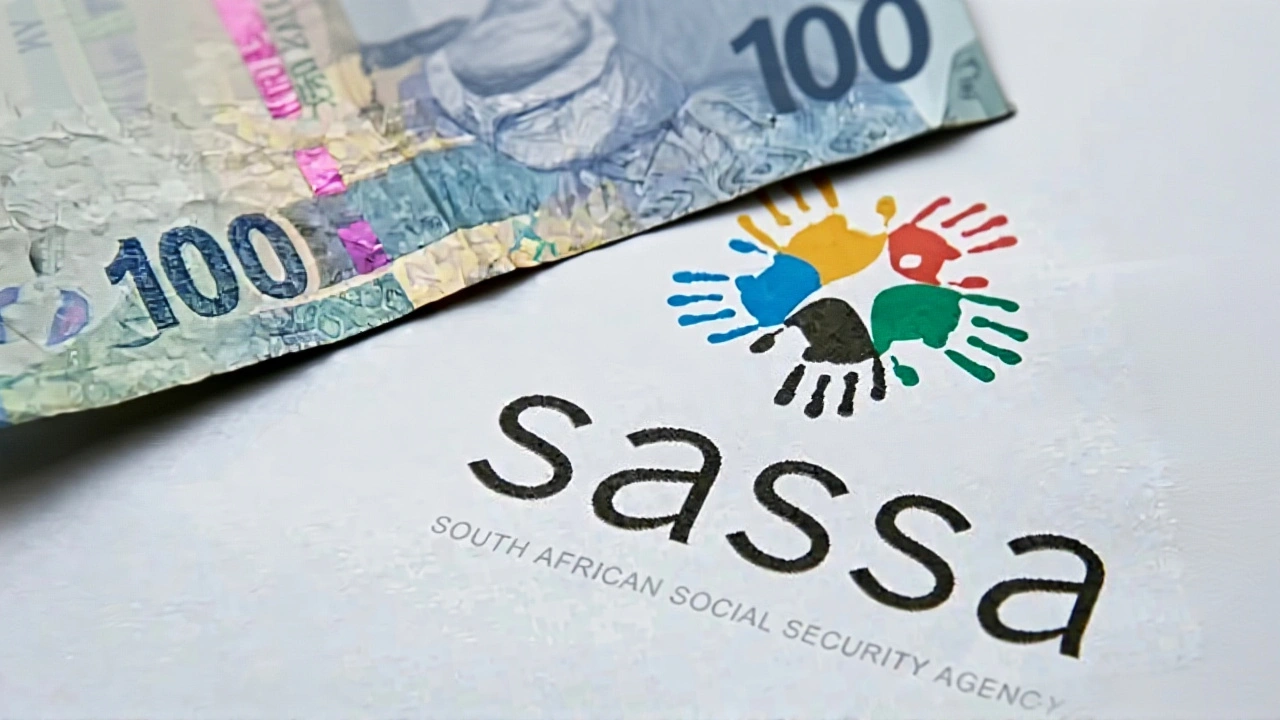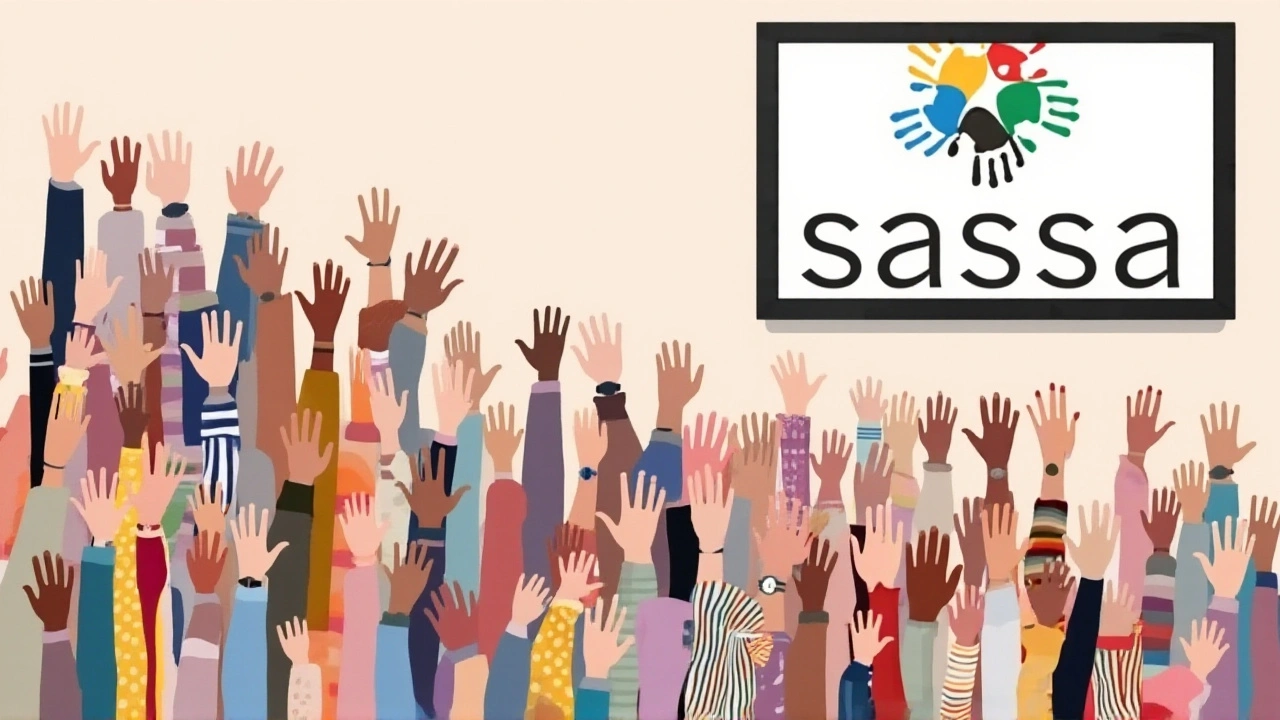 Oct, 1 2025
Oct, 1 2025
When SASSA announced the September 2025 distribution dates for the Social Relief of Distress (SRD) grant, millions of unemployed South Africans immediately checked their bank balances. The R370 monthly payment will be available from September 2025 SRD payment windowSouth Africa between the 25th and the 30th, a shift from the usual early‑month payouts of other social grants.
Background: The SRD Grant and Its Role in South Africa
The SRD grant was introduced in 2020 as an emergency safety net for people aged 18 to 59 who are jobless and do not qualify for other assistance. Roughly 2.4 million South Africans receive the R370 each month, a figure that translates to about R888 million in annual out‑goings for the treasury. Unlike the Old Age Grant or Disability Grant, the SRD is paid later in the month to spread the load on the nation’s banking infrastructure.
September 2025 Payment Schedule and How It Works
The agency confirmed that no payments will be processed on 24 September 2025 because the day is a public holiday. Instead, the batch‑processing system will kick‑off on the 25th, with funds clearing each day until the 30th. Beneficiaries will see the money in their linked accounts, and they can withdraw at any point before the month's end.
"We’ve designed the schedule to avoid the bottlenecks we saw during the pandemic," explained Themba Matlou, SASSA’s CEO. "By staggering the SRD payout, we keep the payment engine humming smoothly and reduce the risk of system overloads."
Banking partners reported that the new window cuts peak‑hour traffic by an estimated 35 %, meaning shorter queues at ATMs and lower transaction failure rates. The agency also reminded beneficiaries that the funds remain in their accounts until they are spent, so there is no need to rush to collection points on the first day.
Biometric Enrollment: New Security Measures
Effective 1 September 2025, SASSA made biometric enrollment mandatory for all new grant applications. Applicants must now provide either a fingerprint scan or facial‑recognition data at an approved SASSA office. The move is aimed at slashing fraud, eliminating duplicate payments, and ensuring that each R370 reaches a genuine South African citizen.
"Our biometric system adds a layer of transparency that was missing before," said Themba Matlou. "We’ve trained over 1,800 staff members and upgraded our data centres to handle the extra load. The goal is a fraud‑free grant portfolio by 2027."
According to an internal audit released in July 2025, fraudulent claims accounted for roughly 4 % of the total SRD disbursements in the preceding year. With the biometric rollout, SASSA expects that number to drop below 1 % within two years.
Reactions from Beneficiaries and Experts
Community leaders in Durban and Johannesburg expressed cautious optimism. "It’s good to see the government tackling fraud, but we need to make sure the enrollment centres are accessible in rural areas," said Nontobeko Dlamini, a spokesperson for the South African Poverty Action Network.
Financial experts echo the sentiment. Dr. Sipho Nkosi, a senior economist at the University of Pretoria, noted, "The later September payout eases pressure on the national payment system, which is a smart operational tweak. However, the biometric requirement could pose challenges for those without easy transport to registration sites."
For many beneficiaries, the practical advice is simple: keep bank details up‑to‑date and watch for SMS alerts from SASSA. The agency’s toll‑free line – 0800 60 10 11 – remains open for queries, and local SASSA offices are staffed with multilingual assistants to help with the new enrollment steps.
Looking Ahead: October Payments and Long‑Term Implications
October 2025 SRD payments are slated for 20 – 27 October, following the same batch‑processing model. Meanwhile, other grants – the Old Age Grant on 2 October, the Disability Grant on 3 October, and child‑support payments on 6 October – will revert to the traditional early‑month schedule.
The biometric rollout is expected to expand beyond new applicants. SASSA plans a phased retro‑enrollment for existing beneficiaries, targeting 50 % coverage by June 2026. If successful, the system could become the backbone for all future social assistance programs, including the upcoming Youth Employment Support Scheme.
In the broader picture, the combined effect of staggered payouts and biometric security could save the treasury an estimated R2 billion annually in fraud‑related losses. That money, analysts argue, could be redirected toward job‑creation initiatives or health‑care upgrades.

Frequently Asked Questions
When will I receive my September SRD grant?
Payments will be transferred to your linked bank account any day between 25 September and 30 September 2025. Funds stay in the account until you choose to withdraw them.
Do I need to enrol biometrically to keep receiving the SRD grant?
Biometric enrolment is mandatory only for new applicants as of 1 September 2025. Existing beneficiaries will be asked to enrol gradually, with a target of half completing the process by June 2026.
What should I do if my bank details have changed?
Visit the nearest SASSA office or call the toll‑free line 0800 60 10 11 to update your account information. Prompt updates help avoid payment delays.
How does the biometric system reduce fraud?
By linking each grant to a unique fingerprint or facial scan, the system prevents duplicate registrations and makes it harder for impostors to claim benefits meant for someone else.
Will the October SRD grant be paid at the same time?
October’s SRD payouts are scheduled for 20 – 27 October 2025, following the same batch‑processing approach used in September.

Rajbir Singh
October 1, 2025 AT 21:34The new schedule looks like a bureaucratic shuffle rather than a genuine improvement. By pushing payments to the end of the month, SASSA merely relieves its own processing load, leaving beneficiaries to wait longer for cash they need now. This approach ignores the reality that many recipients live day‑to‑day.
Swetha Brungi
October 11, 2025 AT 03:47Seeing the payment window shift reminds us that flexibility can be a tool for equity. If the system reduces peak‑hour traffic, it may indeed smooth the banking experience. However, the real test will be whether rural beneficiaries can access biometric centres without hardship. The government’s intent seems sound, but implementation will determine success. Let’s hope the rollout includes mobile units for remote areas.
Govind Kumar
October 20, 2025 AT 10:00In accordance with the recent SASSA announcement, the September 2025 SRD disbursement shall occur between the twenty‑fifth and thirtieth of the month. This temporal adjustment is designed to mitigate transactional bottlenecks observed during prior periods. Beneficiaries are advised to ensure their banking details remain current to avoid processing delays. The introduction of mandatory biometric enrolment for new applicants further underscores the administration’s commitment to fraud mitigation. It is anticipated that these measures will collectively enhance the efficiency and integrity of the grant system.
Shubham Abhang
October 29, 2025 AT 15:14Well... the new dates?? they seem... kinda late?? but maybe.. it helps?? less traffic at banks?? yet still?? people need cash??
Trupti Jain
November 7, 2025 AT 21:27Another day, another shuffle – the rainbow of bureaucracy never ceases to amaze.
deepika balodi
November 17, 2025 AT 03:40Biometric enrolment may help cut fraud, but transport remains a hurdle.
Priya Patil
November 26, 2025 AT 09:54It’s encouraging to see SASSA taking steps toward a more secure system. The biometric rollout could indeed lower fraudulent claims, which have historically siphoned resources away from those truly in need. At the same time, the delayed payout window might strain households that rely on early month cash flow. Community outreach and clear communication will be essential to bridge any gaps. Keep the dialogue open, and the program can evolve positively.
Rashi Jaiswal
December 5, 2025 AT 16:07i think this is a step forward, but the enrolment centres need to be closer. Rural folks cant travel far, u know? hope they fix it soon.
Maneesh Rajput Thakur
December 14, 2025 AT 22:20The shift in payment dates is not just an operational tweak – it’s a deliberate move to control cash flow and monitor citizen activity. By clustering disbursements at month‑end, authorities can more easily track spending patterns through bank data. Coupled with mandatory biometrics, this creates a comprehensive surveillance network under the guise of fraud prevention. One must wonder who gains the most from such data aggregation. The treasury may claim savings, but the real profit lies in the intelligence gathered on the population.